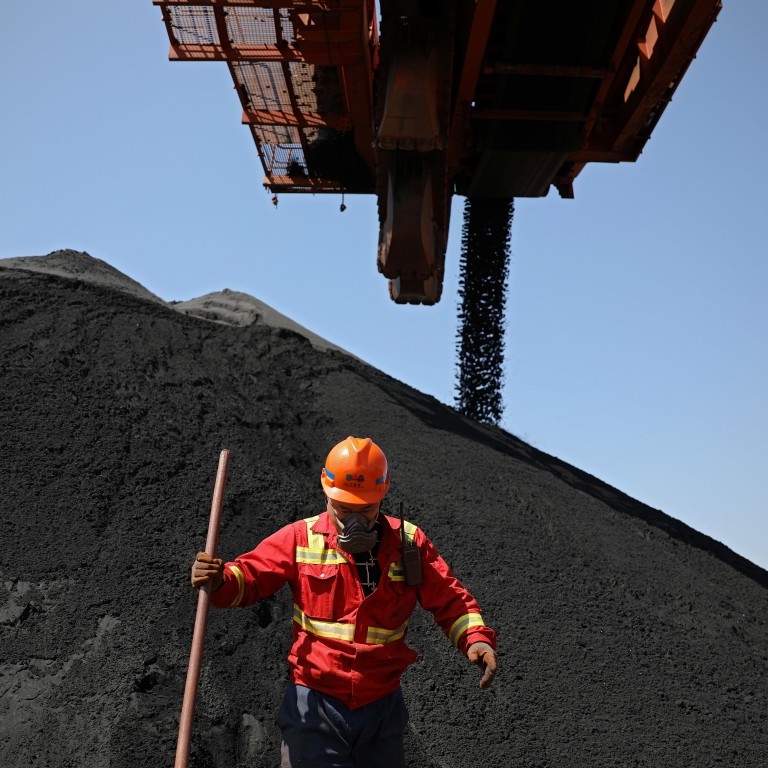
China-Australia relations: iron ore prices drop after Dalian Commodity Exchange tightens limits on futures positions
- Daily limit on opening futures positions is reduced to 2,000 lots for non-brokerage traders – the third time the limit has been reduced this month
- Some analysts say supply-and-demand fundamentals alone would keep prices at US$120 a tonne or lower
Iron ore prices have started to fall after China’s Dalian Commodity Exchange (DCE) tightened its trading rules on Monday in an effort to cool prices that had reached their highest point since 2011.
On Thursday afternoon, iron ore was trading at about US$162 a tonne after closing on Monday at US$176 – the highest price this year, and more than twice the low of about US$81 a tonne in late March, according to the MBIOI-62 price index.
The pivot comes after the DCE tightened its limits on opening futures positions to 2,000 lots a day for non-brokerage traders from Tuesday – further reducing it from a limit of 5,000 lots imposed on December 9, just six days after limits were set at 10,000 lots.
But the Australian miners assured CISA that, for their part in the supply chain, they had made efforts to increase iron ore shipments, which should put downward pressure on prices. They also agreed to work with CISA to address the pricing concerns.
Both the DCE and CISA agreed that, aside from fundamental supply and demand of iron ore, speculation via financial derivative contracts was driving up prices.
But it is the futures speculation that many analysts have specifically pointed to in recent weeks, with punters seeking higher returns in a low interest rate environment.
Ian Roper, general manager of Shanghai Metal Markets Singapore, said that if speculation were effectively curbed by the DCE, iron prices could slide to about US$90 to US$120 a tonne – the equilibrium price based solely on fundamental supply and demand.
“Iron ore has been a tight market for most of the last two years, with prices mainly between US$90 to US$120 a tonne, so it would be totally reasonable for prices to fall all the way back below US$120 on fundamentals,” he said.
Navigate Commodities managing director Atilla Widnell said iron prices could drop to about US$120 to US$130 a tonne based on fundamentals.
The DCE has pledged to step up its market surveillance through overseeing margin calls, as well as other measures to prevent the overheating in futures trading, following requests from CISA, according to analyst Mysteel Global.
But not all analysts agree that speculation is predominantly responsible for the sudden rise in iron ore prices, saying they are notoriously volatile even without speculation, and that supply and demand alone have done most of the price pushing.
“Critics may point to the recent price surge as a sign that something is wrong and that prices have divorced from fundamentals. Looking at the last six years, that might seem a reasonable assertion; never have prices moved so much, so fast,” Julien Hall, S&P Global Platts Asia metals lead, said in a note on Tuesday. “But cast your eye farther back in time and you will find that such volatility is entirely consistent with history.”
It should really come as no surprise to see iron ore prices surging to the current extent
Hall cited examples from the financial crisis in 2008 when prices shrunk two-thirds from US$170 a tonne to US$57 a tonne in three months, and then doubled between October 2009 and April 2010 before dropping 47 per cent in the following three months. In late 2012, prices spiked 74 per cent over four months.
During this time, iron ore derivatives were not trading heavily, while the DCE only started its iron ore futures trading in 2013.
“This seemingly undermines the argument that speculative futures trading is responsible for abnormal volatility,” Hall said. “With global steel markets seeing their sharpest uptrend in over a decade thanks to post-Covid infrastructure spending, it should really come as no surprise to see iron ore prices surging to the current extent.”
Other analysts also point to the fundamental demand and supply as the main drivers of iron ore prices. Gavekal Dragonomics said in a note last week that the current price rally was driven by steel mill demand outpacing iron ore supply.
“The unexpectedly sustained strength of Chinese exports in the second half absorbed inventory further at a time of year when the steel demand is normally weak,” it said. “Supply, meanwhile, has been slow to adjust.”

